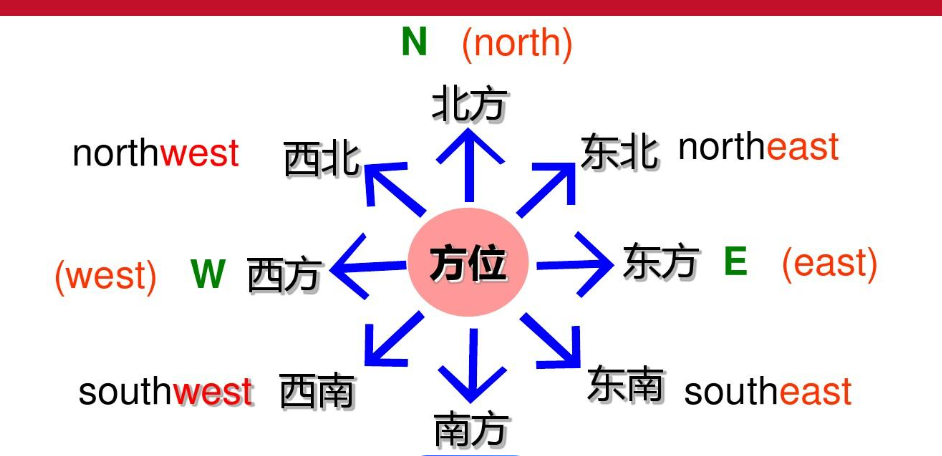Understanding Directions: How to Say East, West, North, and South in English
Introduction
Navigating the world requires more than just knowing the terrain; it involves a fundamental understanding of directions. In English, directions are essential for everything from giving or following directions to understanding geographical locations. In this guide, we’ll explore how to say "east," "west," "north," and "south" in English, along with tips and tricks to help you remember them more easily. Let's understand how to use these directional terms effectively.
One: The Basics of Directions
To begin with, it's crucial to grasp the four cardinal directions in English:
- **North**: This direction is typically associated with cold weather and is often linked to the Arctic region. When you think of "north," envision places like Canada or Alaska and their snowy landscapes.
- **South**: In contrast, "south" often brings to mind warmer regions like Florida or Brazil. It is generally opposite to north and is associated with tropical climates.
- **East**: This direction is where the sun rises. Think of landmarks like the Atlantic Ocean, or countries like Japan and India, which lie east of many other locations.
- **West**: Opposite to the east, the west is where the sun sets. Iconic areas include California and Western Europe, which are often recognized as regions west of the prime meridian.
Knowing these four cardinal directions is foundational in mastering navigation, whether in conversation, travel, or even in studying maps.
Two: Pronunciation and Us玩法e
Understanding the pronunciation of these directional terms is also key to effective communication. Here’s how you pronounce each direction:
- **North**: /n?rθ/
- **South**: /sa?θ/
- **East**: /i?st/
- **West**: /w?st/
Now, let’s consider how to use these terms in sentences:
1. **North**: "The park is located just north of the city center."
2. **South**: "If you travel south, you'll reach the beach in about two hours."
3. **East**: "There are mountains to the east of the valley."
4. **West**: "The sun sets in the west, creating beautiful evening colors."
Each directional term can also be used in various contexts—geographical, meteorological, or even metaphorical. For instance, when discussing a storm, saying "the storm is moving east" gives clear information about its trajectory.
Three: Mnemonic Devices for Memorization

To easily remember these directions and their respective pathways, consider using mnemonic devices. Here are a few ideas:
1. **Self-created Acronym**: You can use the first letters of the directions—N, S, E, W—to create memorable phrases like “Never Eat Soggy Waffles.” Associating each word with a direction can make remembering them easier.
2. **Visual Mapping**: Draw a simple compass with the letters N, S, E, and W laid out clearly. Fill in common landmarks you associate with each direction. For example, you might draw a picture of a sun rising in the "east" and setting in the "west."
3. **Practical Application**: Use these terms in daily conversations. Challenge yourself to give directions to friends or even when asking for help. For instance: “Excuse me, can you tell me which way is north?”
4. **Cultural References**: Many stories, songs, and even movies reference these directions. You can eng玩法e with content that makes use of these terms, reinforcing your understanding subconsciously.
5. **Flashcards**: Create flashcards with the word on one side and its respective direction on the other. Test yourself regularly to solidify your memory.
Conclusion
Mastering the cardinal directions in English—north, south, east, and west—is vital for effective communication and navigation. By understanding their meanings, pronunciations, and practical uses, you position yourself not just to navigate places physically but also to engage better in conversations that involve direction and location. With mnemonic techniques, you can simplify the learning process and ensure that these terms become second nature in your speech. Whether you're traveling, exploring maps, or simply conversing with friends, these directional terms will serve you well. Now, go ahead and put your knowledge to the test!
云作文原创内容,未经允许不得转载。